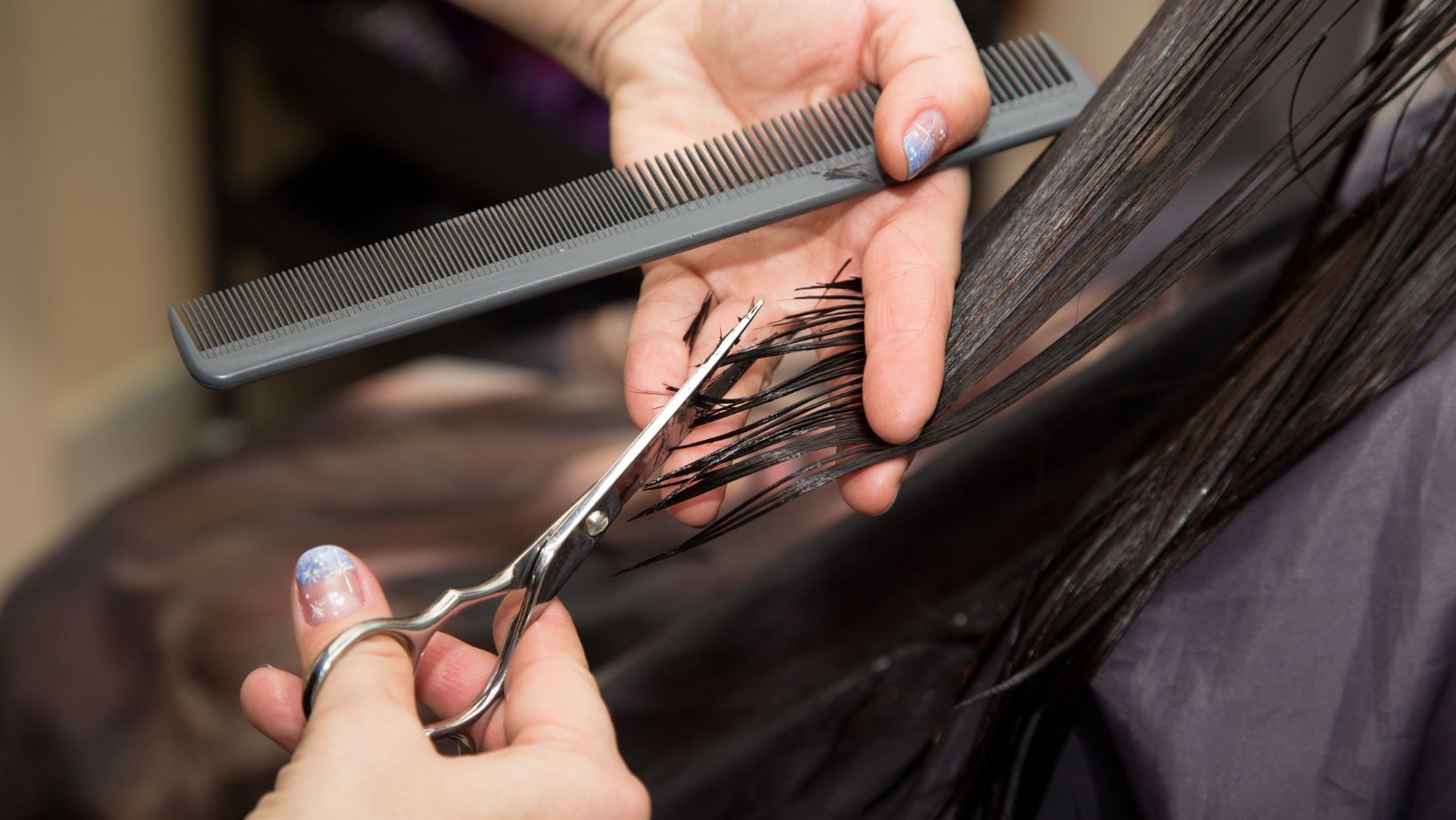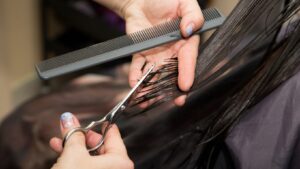If you aren’t sure if your stylist is capable of cutting layers correctly, check to see if they are making these mistakes.
- They Don’t Use the Right Tools
A stylist’s tools —and the way they use them— can make or break a layered haircut. The precision of the cut and the health of the hair ends rely on the correct tools. In his or her arsenal, your stylist should have:
- Thinning shears for removing bulk, layering, blending hairlines, and adding texture.
- Texturizing scissors that have wider teeth with more space between each one. The extra space means they take out a thicker piece of hair to create layers that add volume and texture.
- Shaping razors, for creating soft lines and making hair fall closer to the head.
Sharp tools ensure a clean, precise cut and allow blades to glide effortlessly through the hair, while dull shears or blades can result in a jagged or uneven cut or even split ends. A stylist who’s knowledgeable about layers of hair has tools sharpened regularly by a professional sharpener.
- They Don’t Know How to Texturize
If you’re walking out of a salon with layers that look frizzy, uneven, or too thin, your stylist hasn’t used the right texturizing techniques. The goal of texturizing may change with each type of hair, but it should add movement, volume, and interest to every layered style.
There are a number of techniques your stylist should be using to deliver beautiful layers of hair.
Point cutting
By snipping little slices of hair while holding scissors vertically to the hair’s direction, we get a smoother finish instead of a blunt edge. If more hair needs to be removed, we hold the scissors at an angle (more perpendicular) to the hair.
Slicing
If hair is thick, this technique thins hair while also adding volume so it doesn’t look flat. It simply requires gently sliding the blades out from the mid-lengths of the hair to the ends.
Weaving
To thin the hair, we use a tail comb to weave through each section in an M-shaped motion, moving up and down quickly through the hair.
Internal Cutting
Internal layers of hair build volume and structure. Shorter sections beneath the surface add lift in strategic places, helping to support the shape of a haircut. With a free hand, a stylist should section the hair underneath and clip each segment while weaving a tail comb to help separate and trim the hair. Internal cutting is the perfect technique for a modern and smooth style.
Razor cutting
Using a razor with a comb guard, we lightly slide over sections of hair from the mid-lengths to the ends to shorten and thin out hair evenly. The key to doing this correctly is to follow a fluid motion.

- They Don’t Remind Clients About Proper Mechanics
To deliver a precise cut, your stylist should make sure you don’t cross your legs or arms. When you cross your legs, your pelvis becomes tilted and your body weight is not evenly distributed. This can cause your head to tilt to one side or the other. Crossing your arms over your chest causes your shoulders to hunch forward, creating an uneven line around the neckline. Either mistake can affect the symmetry of a style, especially when cutting the different layers of hair.
- They Don’t See Eye to Eye With Clients (Literally)
It’s impossible for a stylist to gauge if layers are even while standing up behind you. A good hair artist will bend down in front of you, or sit on a cutting tool that puts them at eye-level with the hair. This is especially important to ensure that any layers in the front of the face fall where they should.
- They Don’t Understand Overdirection
Overdirection is a technical cosmetology term, but it’s extremely important when cutting the different layers of hair. If you see your stylist combing your hair away from its natural falling position in a side-to-side motion, rather than straight out from the head, they are ensuring the length of the layers will fall as they should for your desired style. If hair is directed from the front to the back, the hair will be longer and fuller in the front. If the hair is directed from back to front, the hair will be longer and fuller in the back. Reputable stylists are trained in this technique and will use it every time they are creating a layered cut.
- They Don’t Check Every Detail
Detailing is the finishing touch on a haircut and refines the final look. It gives the stylist one final chance to even out anything that’s crooked, or fix stray hairs that don’t fit into the desired shape or outline. With layered styles, it’s especially important to go through each section with texturizing shears or a razor to remove weight and bulk after the hair is completely dry.
To do a thorough job of detailing, stylists need to look at the cut from every angle — not just through the mirror while standing behind you. They should ask you to tilt and turn your head this way and that, looking for any strands that don’t fall properly. And by having you stand up and bend forward, they can check the internal layers of hair for small pieces that stick out longer than the rest. If your stylist isn’t asking you to tilt, turn, and bend, they’re skipping an important step.
Vakkar Stylists are Experts in Creating Layers
When you come to Vakkar for a layered cut, you can be sure you won’t leave with choppy, frizzy, uneven hair. Our stylists have received extensive professional training in cutting external and internal layers of hair, and our goal is to ensure you love the way you look every time you leave our salon. To schedule a consultation with one of our talented stylists, contact us today!





